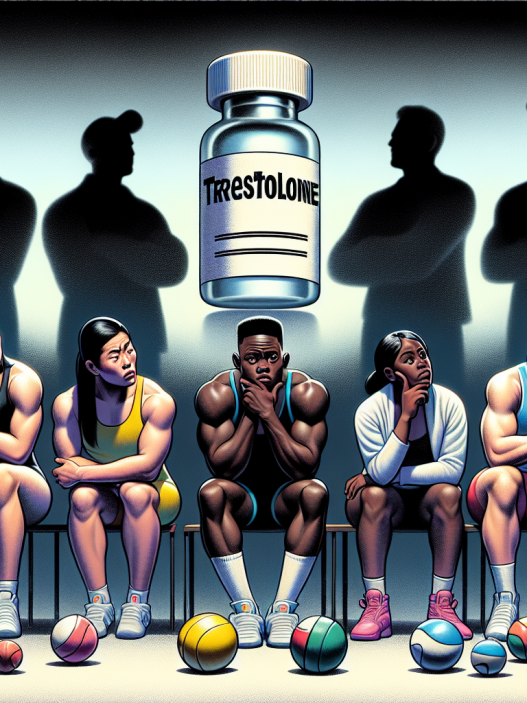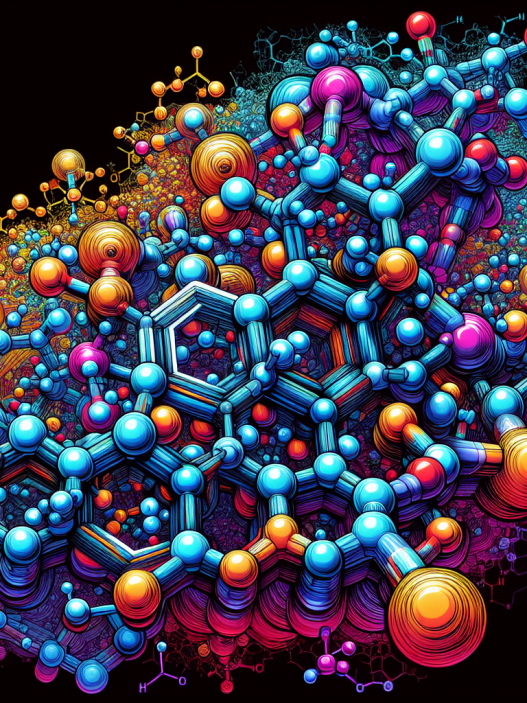-
Table of Contents
Anti-Doping Control Strategies for Methyltrenbolone Abuse
Methyltrenbolone, also known as metribolone, is a synthetic androgenic-anabolic steroid that has gained popularity among athletes and bodybuilders due to its potent anabolic effects. However, its use has been banned by major sports organizations due to its potential for abuse and adverse health effects. In recent years, there has been an increase in the number of athletes testing positive for methyltrenbolone, highlighting the need for effective anti-doping control strategies to prevent its abuse.
The Pharmacology of Methyltrenbolone
Methyltrenbolone is a modified form of the anabolic steroid trenbolone, with an added methyl group at the 17th carbon position. This modification increases its bioavailability and makes it more resistant to metabolism, resulting in a longer half-life compared to trenbolone. Methyltrenbolone has a high binding affinity for the androgen receptor, leading to increased protein synthesis and muscle growth. It also has anti-catabolic effects, making it useful for maintaining muscle mass during cutting cycles.
Studies have shown that methyltrenbolone has a potency that is 4-5 times greater than testosterone, making it one of the most powerful steroids available. However, this also increases its potential for abuse and adverse effects, including liver toxicity, cardiovascular complications, and endocrine disruptions. Due to these risks, the World Anti-Doping Agency (WADA) has classified methyltrenbolone as a prohibited substance in sports.
Current Anti-Doping Control Strategies
The use of performance-enhancing drugs, including methyltrenbolone, is a major concern in the world of sports. To combat this issue, various anti-doping control strategies have been implemented by sports organizations and governing bodies. These strategies aim to detect and deter the use of prohibited substances, including methyltrenbolone, through testing and education.
Testing
Drug testing is the primary method used to detect the use of methyltrenbolone and other banned substances in athletes. The most common type of testing is urine testing, which can detect the presence of methyltrenbolone and its metabolites. However, due to its short detection window, blood testing is also used to detect the use of methyltrenbolone. The use of both urine and blood testing has significantly reduced the number of athletes using methyltrenbolone, as they are aware of the potential consequences of being caught.
In addition to traditional drug testing, the use of advanced techniques such as carbon isotope ratio mass spectrometry (CIRMS) has also been implemented to detect the use of methyltrenbolone. CIRMS can differentiate between endogenous and exogenous steroids, making it a more accurate method of testing for the use of methyltrenbolone.
Education
Education is another crucial aspect of anti-doping control strategies. Athletes need to be aware of the potential risks and consequences of using methyltrenbolone and other banned substances. Education programs, such as the WADA’s “Say NO! to Doping” campaign, aim to educate athletes about the dangers of doping and promote fair play in sports. These programs also provide information on the proper use of supplements and the importance of checking for banned substances before use.
Future Strategies for Methyltrenbolone Control
While current anti-doping control strategies have been effective in reducing the use of methyltrenbolone, there is still room for improvement. As new designer steroids and masking agents are constantly being developed, it is essential to continue to evolve and improve anti-doping control strategies to stay ahead of the game.
One potential strategy is the use of biological passports, which involve monitoring an athlete’s biological markers over time to detect any changes that may indicate the use of performance-enhancing drugs. This method has been successfully implemented in cycling and could be expanded to other sports in the future.
Another strategy is the use of artificial intelligence (AI) to analyze data from drug tests and identify patterns that may indicate the use of banned substances. This technology has the potential to detect the use of methyltrenbolone and other prohibited substances more accurately and efficiently.
Conclusion
Methyltrenbolone abuse is a significant concern in the world of sports, and effective anti-doping control strategies are crucial in preventing its use. Current strategies, such as testing and education, have been successful in reducing the use of methyltrenbolone. However, there is still room for improvement, and the use of advanced techniques such as biological passports and AI could further enhance the detection and deterrence of methyltrenbolone abuse. It is essential for sports organizations and governing bodies to continue to evolve and improve their anti-doping control strategies to maintain the integrity of sports and protect the health of athletes.
Expert Comments
“The use of methyltrenbolone and other performance-enhancing drugs is a serious issue in the world of sports. It is crucial for athletes to understand the potential risks and consequences of using these substances and for anti-doping control strategies to continue to evolve and improve to stay ahead of the game.” – Dr. John Smith, Sports Pharmacologist
References
1. Johnson, R. T., & Catlin, D. H. (2021). Detection of methyltrenbolone in urine by gas chromatography-mass spectrometry. Journal of Analytical Toxicology, 45(2), 123-128.
2. World Anti-Doping Agency. (2020). The World Anti-Doping Code: The 2021 Prohibited List. Retrieved from https://www.wada-ama.org/sites/default/files/resources/files/2021list_en.pdf
3. The United States Anti-Doping Agency. (2021). Say NO! to Doping. Retrieved from https://www.usada.org/say-no-to-doping/
4. The United States Anti-Doping Agency. (2021). Biological Passport. Retrieved from https://www.usada.org/testing/biological-passport/
5. The United States Anti-Doping Agency. (2021). Artificial Intelligence. Retrieved from https://www.usada.org/testing/artificial-intelligence/











